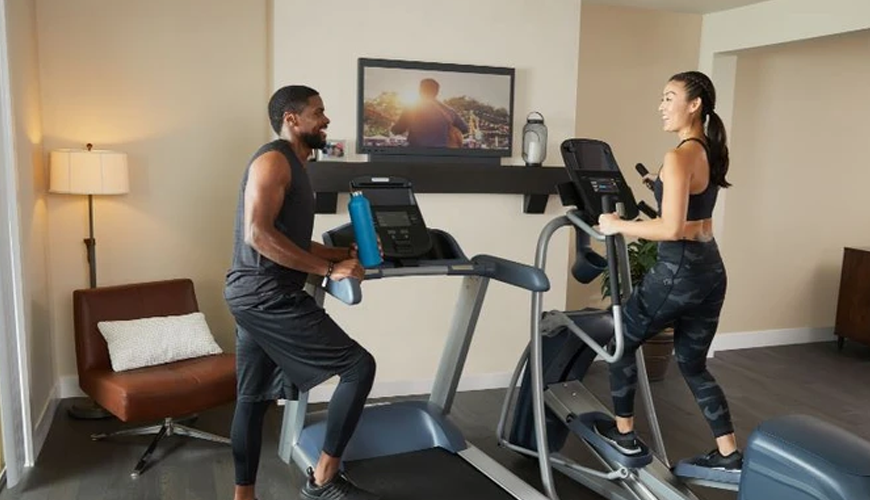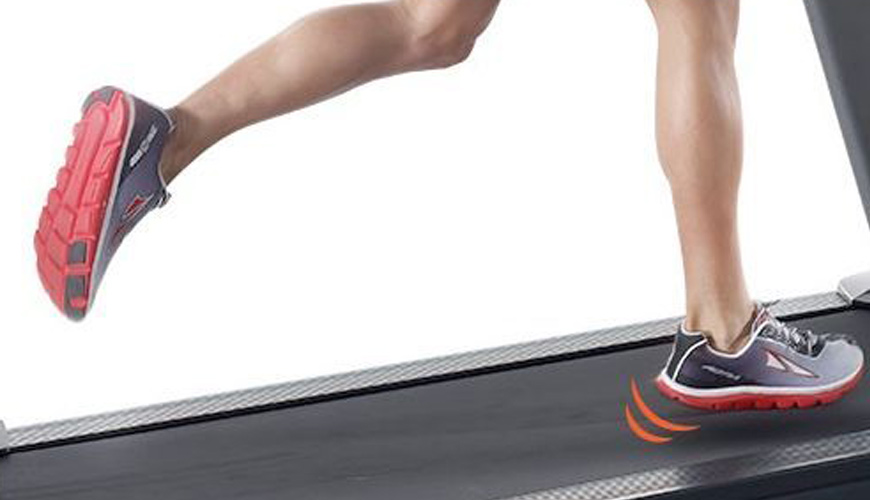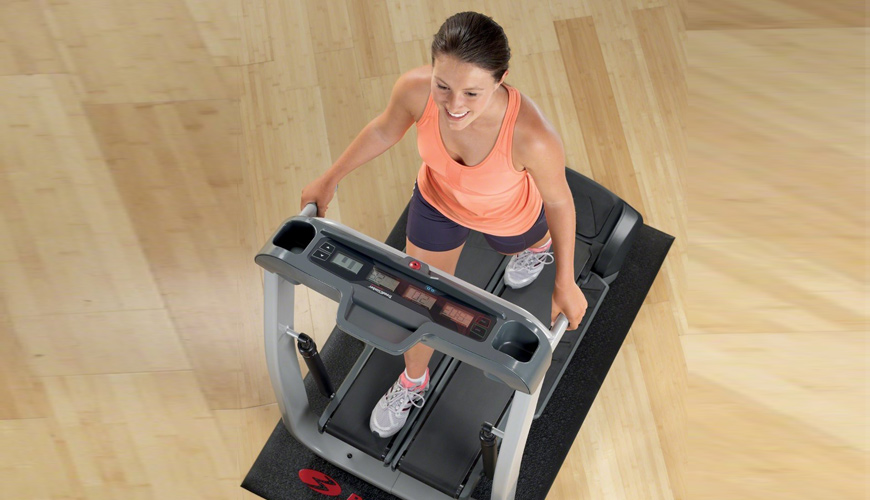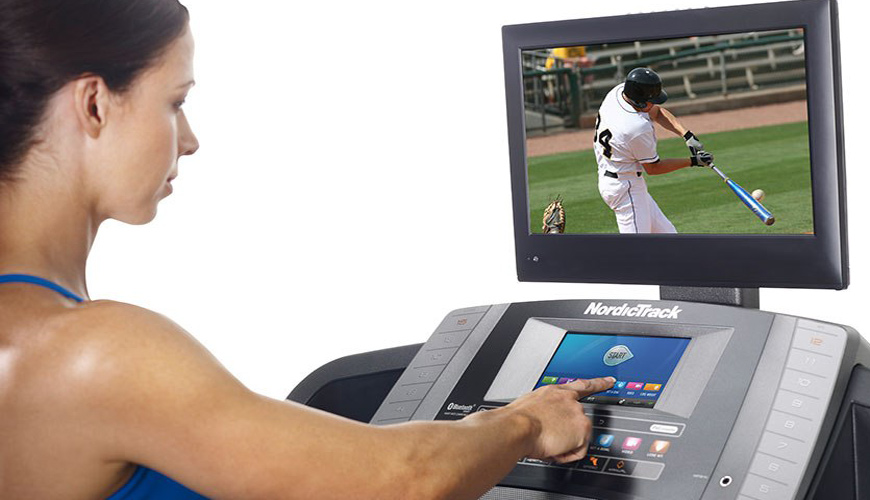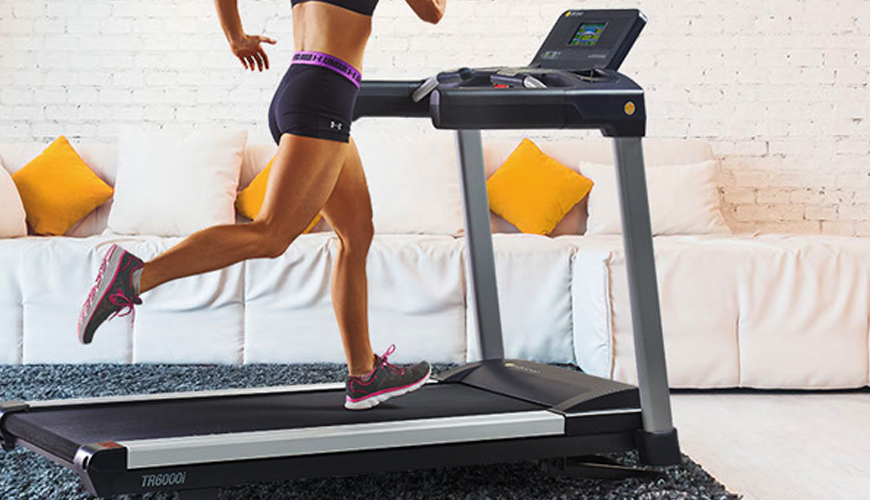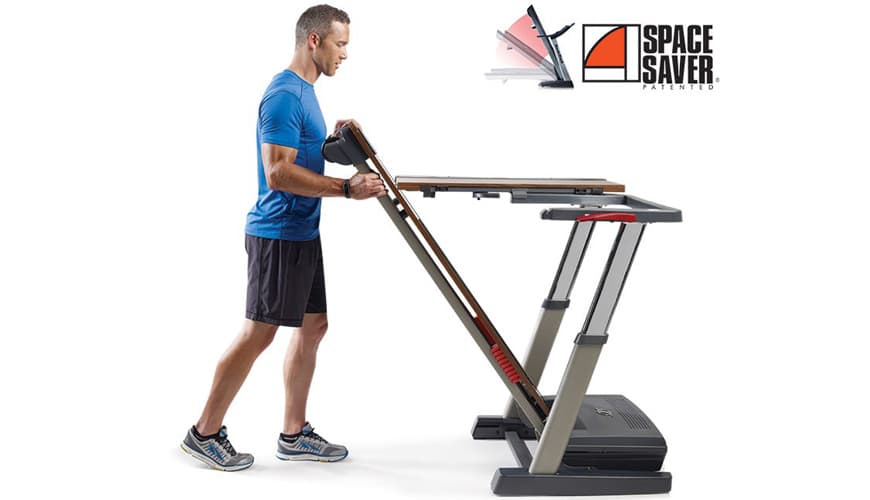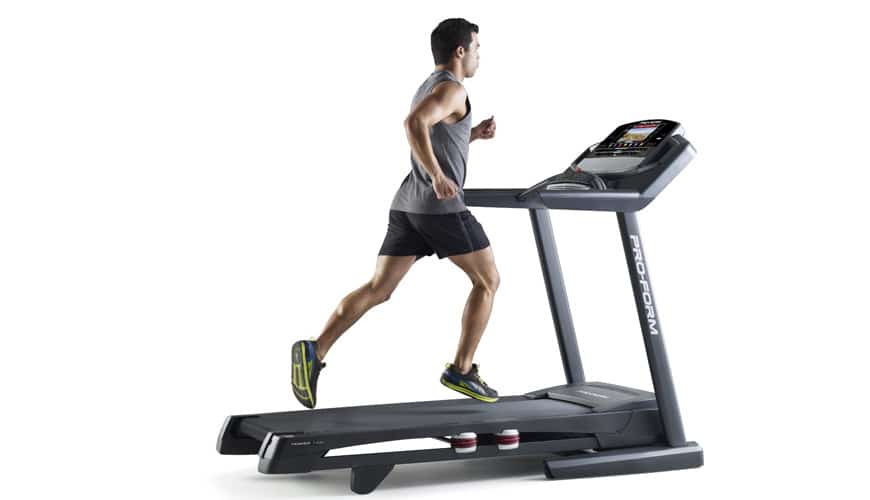Changing Up Your Routine with a HIIT Treadmill Workout
HIIT Run on Treadmill: Get In The Know
Running on a treadmill is one of the best ways to train with high intensity interval training. As human beings, we’ve all evolved to run. If you observe young kids, you’ll notice that they are always running. They’re full of energy and can’t wait to get from one point to another.
As we get older, we run less… and when we do try running as a form of exercise, we hate it. The panting, the exhaustion, the sweaty nature of the exercise, etc. Yet, it is without a doubt one of the best ways to burn calories and fat. Your body was designed to run.
In a HIIT session, you’ll be cranking up the speed setting on the treadmill and sprinting as fast as you can. There is no jogging here. In fact, jogging is not recommended at all. You’re better off walking.
That said, sprinting/running is not for everybody too. If you have knee problems, or you’re severely overweight, running is a high impact activity that will place immense stress on your knees and is best avoided.
Once you’ve lost a lot of your excess pounds, you can start jogging and work your way into running and eventually start your HIIT treadmill workouts. These sessions are great for burning off the excess fat.
This is an intense form of exercise that is great if you’re already in shape… or you’re not in shape yet but you’re also not totally out of shape either.
Before starting to run on a treadmill, you need to take note of a few points:
- Footwear
You need the correct footwear. It’s the most important piece of equipment you need. The shoes you wear should support you well. Ideally, you should wear the shoes and walk in them for a while so that they fit better to the shape of your feet.
Do not immediately run in a new pair of shoes without breaking it in. The shoes you pick should be running shoes and not those made for cross-training, etc. After all, you’re going to be running.
If you’re flat-footed, make sure you get shoes with a high arch, and if you’ve any other issues, get the right shoe to compensate for them.
- Technique
Running technique is very important and becomes even more important when you’re exhausted during a HIIT workout. Watch your stride and maintain an erect torso while running.
The weight of your body should be on the front of your foot. Your legs and arms must be synchronized and move contralaterally.
- Intervals
How you decide to run during your HIIT will depend on your level of fitness. A normal HIIT workout can last about 15 minutes. If you’re running hard, even 10 minutes will do.
Example 1:
Sprint for 45 seconds, rest 15 seconds
Sprint for 30 seconds, rest 30 seconds
(Repeat 5X for a 10-minute workout)
Example 2:
Sprint for 20 seconds, rest 10 seconds
(Repeat 8X for a 4-minute workout)
Example 2 is a Tabata workout and it may not seem like much, but if you’re going at maximum intensity, by the 6th sprint, you’ll be gasping and struggling. It’s that tough. Don’t knock it till you’ve tried it.
- Challenge
You can always make your running workouts more challenging by finding hills. Running uphill is a fantastic way to challenge yourself. Another way to up your intensity level will be to wear ankle weights or carry a haversack on your shoulders with some weights in them and run.
The added weight will make for a very arduous workout. Your aerobic and anaerobic fitness levels will skyrocket in 3 to 4 weeks and you will notice how much fitter and stronger you become.
Stamina improves relatively fast. So, make running a part of your training regimen. When your legs get tired, run with your heart.
How to Get Your Muscles Warmed Up Before HIIT
When starting a high intensity workout, it’s critical to warm up first. It’s not like walking or doing a low intensity exercise. You need to get loose in order to prevent a possible injury. Getting your muscles warmed up will allow oxygen to the muscles and improve circulation. This will increase flexibility and get you ready for your the intense training.
You want your warm up to last for about 3 to 5 minutes. The goal is to get the blood flowing and your heart pumping a little harder as it gets ready to exert. You don’t want to exhaust yourself during a warm up by going too long, and you don’t want to be insufficiently warmed up by going too slow/short.
If you live in a cold climate, you may use a heater to warm up the room you’re working out in. This will keep your muscles warm. Training harder just to warm up during winter time is not productive. You’re better off in a warm room or wearing a few layers of clothes to stay warm.
Do not engage in long static stretches. This is the ‘old school’ style of training. In the past, people would spend a good 15 minutes stretching their muscles before a workout.
Recent studies have shown that excessive stretching prior to a workout diminishes your ability to exert maximum strength. Your muscles are too relaxed to work hard. So, you’re better off with a few quick dynamic stretches and some light cardio to warm yourself up.
Walking on a treadmill is a good warm up. Using a jump rope at a relaxed pace is a warm up. A few minutes on the rowing machine is also a good idea.
Doing heavy deadlifts is NOT a warm up. Such heavy exercises are not warm ups even if you only do 2 or 3 reps. You’ll still be exhausting yourself.
Besides warming up, you should make time for stretching and flexibility training. However, stretching is best done a few hours before your training. It’s just to keep you limber and flexible.
Stretching upon waking is wonderful practice. After sleeping the whole night, your body will be stiff and could do with a good stretch. Alternatively, you may wish to attend yoga sessions to get relieve the tension in your body.
Being flexible will help prevent you from getting injured easily. Your body will be more pliable and less susceptible to getting sudden cramps or muscle tears.
Two key areas you should focus on are your lower back and your hamstrings. The connective tissue in your hamstrings tend to be ‘tight and stiff’.
This usually causes back pain and even knee pain. Try to stretch your hamstrings daily. Do the same for your back too. If you’re short on time, stretching these 2 areas alone will help to relieve the tension in your body.
So many people suffer from back problems because the muscles in the back and body are tight. Flexibility training can and should be done daily – just don’t do it immediately before your HIIT session.
To conclude, warming up is necessary to performing your best during your HIIT workouts, and being flexible will help you to move better during your training. Give both the attention they need.
“You are only as young as your spine is flexible.” – Joseph Pilates
HIIT Rest & Recovery Importance
High intensity interval training (HII) is tough. It places immense demands on your body during and after the workout. This is not a training protocol that should be taken lightly.
Rest is VERY important when you’re doing HIIT. Many people believe in fitness mantras like, “Go hard or go home” … or “I don’t stop when I’m tired. I stop when I’m done.”
All that sounds well and good… until you start doing HIIT daily. Then your body feels drained and you start aching everywhere. Any fat loss you were experiencing comes to a halt because your central nervous system is ‘burned out’ and you’ve just hit a weight loss plateau.
Now you’ll need to rest a few days before things return to normal. All this can be avoided by knowing when to rest and how long to rest for.
- Duration of rest intervals
During your HIIT workouts, your rest intervals could be anywhere from 15 to 30 seconds. Sometimes it may feel like this short period is not enough for you to catch your breath.
If you really need more rest, go ahead and rest and pump out the remaining reps when you have the energy to. While the goal is to train at maximum intensity, you must also know your body and not go overboard.
There have been people who have suddenly died while working out. The intensity was too high for them and their heart just gave out. So, your rest intervals are there to give your heart some time to recover… but they’re not set in stone to force you to go beyond what you’re capable of.
Do not remove the rest intervals in your HIIT workouts and think that you can rest at the end of it all. The rest intervals are required to give you a few seconds to recharge so that your can give maximum effort on the next set.
- Staggering the exercises
Initially, when you’re starting HIIT, you may wish to place exercises that work different body parts back to back. For example, a set of squats can be followed by a set of pushups.
Now your legs have time to rest and recover while you’re doing the pushups and working your arms. After the pushups, you could do an exercise that works the core like reverse woodchops… and that’ll give your legs more time to rest… and after that you can hit them again with jumping lunges.
So, structure your workout in a way where you don’t overly tax your body parts. Later, when you’re much fitter you can go ahead and train them hard, but initially, approach your training in a systematic and progressive manner.
- Frequency of sessions
Try not to do more than 3 HIIT sessions a week. These are very effective workouts and you’ll be in fat burning mode long after the workout is over. You don’t need to do them daily to see faster results.
If you’re new to training and have led a sedentary lifestyle for years, you may wish to do HIIT just once or twice a week. Always have a day or two break between each HIIT session.
Do not do HIIT on consecutive days. If you do HIIT today, tomorrow you could go for a walk or do some resistance training. Give your body time to rest and recover.
If you rest during and between your sessions, not only will your aerobic and anaerobic fitness improve, but you’ll see much faster progress. Music is the space between the notes. Rest well, but don’t rest too long.


